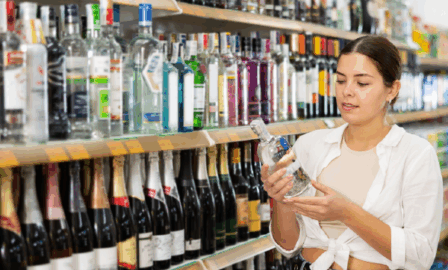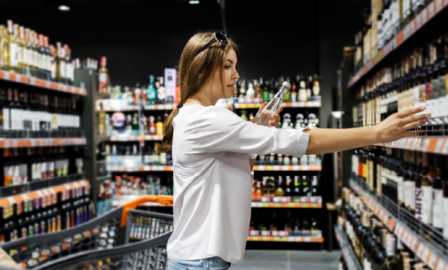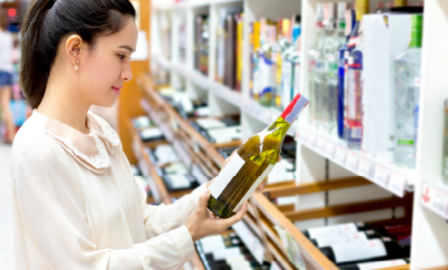The Growing Market for Functional Alcoholic Beverages
In today’s ever-changing consumer landscape, the alcohol industry has shown fascinating transformations to meet the demands of shifting consumer tastes and preferences. 2022 marked the first year where the spirits market share surpassed the beer market share in the U.S. beverage alcohol market. Largely attributed to the impacts of the Covid pandemic, the alcohol industry is experiencing a new era of health-conscious consumers. The rise of “better-for-you” alcoholic beverages has opened new and profitable sectors to an overall alcohol industry that has an estimated $360 billion impact on the American economy. When making purchasing decisions, 29% of consumers actively seek the healthier alcohol option. This evolving dynamic has required producers, distributors, and marketers to innovate to meet the needs of an increasingly diverse customer base. From this, there have been huge upticks in the production and sales of carb-free beer, calorie-conscious wine, and no sugar added spirits. Consumers are actively seeking products that support their health and wellness goals, and the alcohol industry is no exception to this, as we’re seeing a growing demand for functional beverages as a convenient health supplement. In this piece, we explore the growing functional alcoholic beverages market and implications for the sector moving forward.
What Are Functional Beverages?
Functional beverages are drinks that have been formulated with specific ingredients to provide health benefits beyond hydration or flavor. These drinks are advertised as promoting wellness and improving physical or mental performance through ingredients containing vitamins, minerals, herbs, and antioxidants. All of this is in the effort to align with health-conscious consumers seeking a convenient way to support their wellness goals.
However, there is still a high demand for alcohol among consumers. Despite shifts within the industry, the global alcohol industry value experienced a 10% growth increase from 2021 to 2022 and is expected to hit $2.2T in value by 2026. In recent years, companies have ventured into a new niche in the industry: functional alcoholic beverages. Though currently establishing itself in a highly competitive market, the emergence of this beverage alcohol sector demonstrates promising potential for profitability as it resonates effectively with health-conscious consumers.
Challenges in the Functional Alcoholic Beverage Market
Competition
As a generation, Gen Z is consuming less alcohol and has instead ventured into alternate offerings, such as non-alcoholic beverages and CBD-infused products. Between 2022 and 2026, the non-alcoholic beverage category is expected to increase in volume by 25%. Many alcohol companies are beginning to roll out their own alcohol-free offerings. For instance, Heineken 0.0 is an alcohol-free beer that is heavily advertised in social yet responsible drinking settings, comprising more than a quarter of the nonalcoholic beer segment valued at $22 billion in 2022. In addition to non-alcoholic beverages, adaptogenic products and CBD-/THC-infused drinks have also emerged as competitors to the alcohol market. These products, which come in beverage offerings, provide natural soothing and calming effects without a hangover. Despite this growth in competitive industries, alcohol is still the most established by far. Regardless, it’s vital for alcohol companies to innovate to meet the needs of new generations of eligible consumers.
Regulation
The functional alcoholic beverages sector presents a challenging terrain, as alcohol companies must advertise their inherently “unhealthy” alcohol as something that aligns with consumer health standards. In some cases, this is referred to as the fortification of alcohol. The U.S. Food and Drug Administration does “not consider it appropriate to add vitamins and minerals to alcoholic beverages.” While this puts brands like Vizzy’s marketing strategy under question, it’s important to understand that Vizzy’s goal is to attract alcohol drinkers away from its competitors, not to convince consumers to substitute hard seltzer for nutrient-dense foods. As functional alcoholic beverages continue to expand as a sector in the industry, companies will have to get creative in production processes and marketing strategies to attract health-conscious consumers while simultaneously complying by FDA regulations.
Functional Alcoholic Beverage Case Studies
Despite the challenges, there are several successful case studies in the functional alcoholic beverage sector, with two discussed below:
Vizzy Hard Seltzer
As many social gatherings moved outside due to the Covid pandemic, the hard seltzer market saw huge success, growing 165% in 2020. While this growth has since slowed as consumers move back indoors and drinking habits change, hard seltzer has established itself as a key sector in the alcohol industry. Within the hard seltzer section, beer brands have emerged as the main producers, such as Molson Coors, manufacturer of Coors Light, Miller Lite, and other popular beers, who launched Vizzy Hard Seltzer in 2020. Experiencing almost instant success, Vizzy was the 14th fastest growing brand in 2021, and thanks to effective targeted marketing, is now the fourth most popular hard seltzer in the U.S. Like other hard seltzers, Vizzy is advertised as low calorie, carb, and sugar; however, what separated it from other existing products was that it marketed itself as containing antioxidant vitamin C, qualifying it as a functional alcoholic beverage. Many of the early advertising campaigns heavily emphasized the antioxidant vitamin C feature of the drink; however, Vizzy has since encountered some regulatory troubles and altered their marketing strategy.
Hard Kombucha
The fermented tea beverage known as Kombucha has become a highly sought after product in the beverage industry, elevating from $1 million in sales to $1.8 billion in the span of five years. By altering ingredient levels and length of fermentation, the ABV can reach up to 10%, though most offerings of the functional alcoholic beverage hover around 6%. Due to the natural ingredients and production process of the beverage, Hard Kombucha satisfies many of the health criteria that consumers are looking for. This includes using real fruit, being low calorie and sugar, and containing high amounts of probiotics and antioxidants. Also, some Hard Kombuchas, such as JuneShine and Flying Embers, are vegan, gluten free, keto-friendly, and organic. As the functional sector of the alcohol industry continues to develop, this growing line of ready-to-drink beverages satisfies what consumers are looking for in today’s alcohol market.
Looking Ahead
Seeking beverage options that align with their wellness goals, health-conscious consumers are driving changes in the alcohol market. Despite market shifts, an overwhelming majority of Americans still believe drinking is a big part of the nation’s culture. In many ways, functional alcoholic beverages provide the balance consumers are looking for. There are still challenges to consider with regards to FDA and state regulations, but the functional alcoholic beverage industry will certainly be one to watch as it continues to evolve.
Existing alcohol companies need to be aware of this trend and will need to consider expansion into the sector to compete with developing alcohol alternatives. If you’re looking to take advantage of these emerging sectors, connect with one of our wine and spirits experts today.
Subscribe to Clarkston's Insights
Contributions from Aaron Messer



